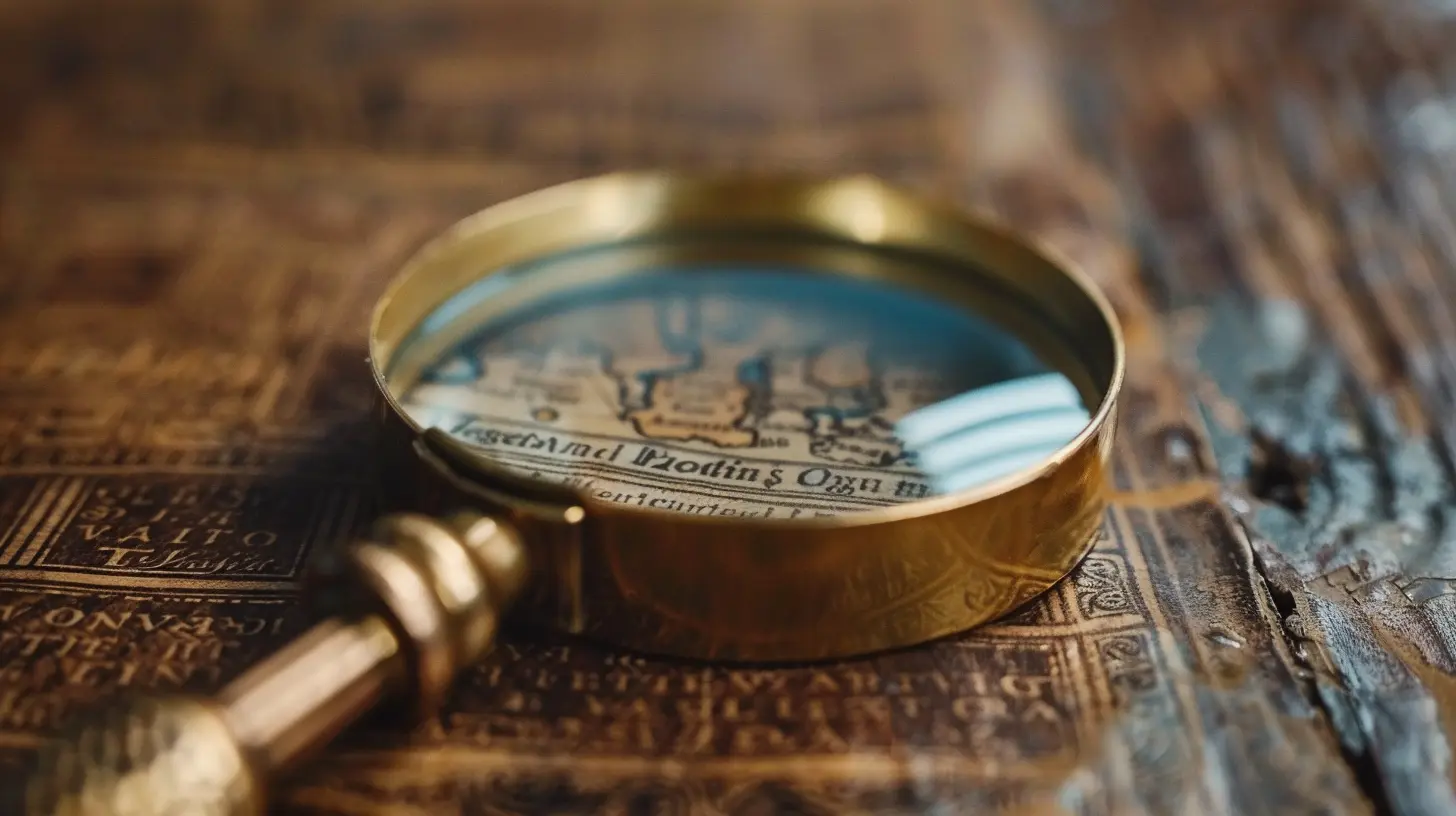The Importance of Alt Text: How to Optimize Images for SEO
23 May 2025
If you've ever spent hours perfecting your website content, only to feel like something’s still missing, you’re not alone. Lots of people overlook one small but mighty detail that can make or break their SEO game: alt text. Yep, I'm talking about those short, descriptive snippets tied to images on a website.
Now, you might be wondering—what’s the big deal? Images are just, well, images, right? Nope, they’re so much more than that! Let me walk you through the importance of alt text and show you how optimizing it can boost your website's SEO like crazy. Trust me, this tiny tweak is like hitting the jackpot when it comes to getting noticed online.
What Is Alt Text, Anyway?
Before we jump into optimization strategies, let's get the basics straight. Alt text, short for “alternative text,” is essentially a written description of an image. It's like a little info card for search engines and users who can’t see the image.Alt text serves two main purposes:
1. Accessibility: It helps visually impaired users who rely on screen readers understand what’s happening in the image.
2. SEO: It gives search engines context about the image, which can improve your site’s rankings.
Think of alt text as the voice of your images. Without it, your visuals are like silent actors in an SEO play. They look great, but they’re not communicating with anyone.
Why Does Alt Text Matter for SEO?
Okay, so we know what alt text is. But why should you care about it for SEO? Let me break it down.1. Search Engine Visibility
Search engines like Google can't "see" images the way we do. They rely on alt text to understand what the image is about. When you use keywords in your alt text, it's like handing Google a roadmap to your content. This increases your chances of appearing in search results, especially in image searches.Think of it this way: If your site were a pizza joint, alt text would be the glowing "OPEN" sign that draws customers in. Without it, people (and search engines) might pass you by without even realizing what you offer.
2. Improved User Experience
User experience (UX) is a big deal when it comes to SEO. Well-written alt text makes your site more accessible, ensuring all users—regardless of disabilities—can engage with your content. And when users are happy, search engines take notice.3. Reduced Bounce Rates
Ever clicked on a webpage and hit the back button immediately because it wasn’t what you were looking for? That’s a bounce. Alt text can help keep visitors on your site by ensuring your images match their search intent. If someone searches for “blue sneakers” and lands on your page, a clear alt text like “A pair of trendy blue sneakers with white soles” is more likely to keep them around.4. Content Relevance
Alt text also contributes to the overall relevance of your page. When search engines see that your alt text aligns with your other content, it sends a clear message: “This page knows its stuff.” That means better rankings for you!
How to Write Great Alt Text for SEO
Now for the fun part—how do you write alt text that’s not only helpful but also SEO-friendly? Don’t worry, I’ve got you covered. Let’s dive into some practical tips.1. Be Descriptive, But Keep It Short
Good alt text gives a clear description of the image without turning into a novel. Aim for one or two sentences that tell users exactly what they’re looking at. For example:- Bad: `Image123.jpg`
- Good: `A smiling woman holding a cup of coffee in a cozy café`
Keep it concise but meaningful. Think of it like captioning a photo for Instagram—short, sweet, and to the point.
2. Incorporate Keywords Naturally
Yes, keywords are important, but stuffing them into your alt text is a big no-no. Instead, sprinkle them in naturally. For example, if your target keyword is “organic skincare,” here’s what you can do:- Avoid: `Picture of skincare products`
- Use: `A collection of organic skincare products, including a cleanser and moisturizer`
See the difference? The second one flows naturally and adds value, while the first one is just plain boring.
3. Avoid Using “Image of” or “Picture of”
Search engines already know it's an image, so there's no need to state the obvious. Jump straight into describing what’s in the image instead. For example:- Instead of: `Image of a red sports car parked by the beach`
- Use: `A sleek red sports car parked near a beachside road at sunset`
Not only does this save space, but it also makes your alt text more engaging.
4. Focus on Context
Your alt text should be relevant to the surrounding content on your page. If your article is about “10 Best Beaches in Hawaii,” the alt text for an image of a beach could be:- `A sunrise view of Waikiki Beach in Honolulu, Hawaii`
This approach connects your images to the story you’re telling, making your content more cohesive.
5. Don’t Forget Accessibility
At the heart of alt text is accessibility. Avoid jargon or overly technical terms unless absolutely necessary. Write in a way that anyone can understand, whether they're an SEO pro or a first-time visitor.
Examples of SEO-Friendly Alt Text
Let’s look at a few examples of well-optimized alt text for common scenarios:Example 1: Product Image
- Image: A white T-shirt on a wooden table- Alt Text: `A plain white cotton T-shirt folded neatly on a wooden table`
Example 2: Travel Blog
- Image: A hiker on a mountain trail- Alt Text: `A solo hiker enjoying a scenic mountain trail with a stunning view`
Example 3: Food Blog
- Image: A bowl of pasta- Alt Text: `A delicious bowl of creamy fettuccine Alfredo garnished with fresh parsley`
Notice how each description is specific, engaging, and includes relevant keywords without going overboard.
Common Mistakes to Avoid
Even seasoned SEO writers slip up when it comes to alt text. Here are some pitfalls to dodge:1. Keyword Stuffing
Trying to cram multiple keywords into your alt text does more harm than good. For example:- Bad: `Buy best organic skincare products organic moisturizer organic cleanser`
- Good: `A collection of organic skincare products, including a cleanser and moisturizer`
2. Leaving Alt Text Blank
No alt text is better than bad alt text, but blank fields are a missed opportunity. Always fill them in where possible.3. Generic Descriptions
Descriptions like “image123.jpg” or “logo” add zero value. Be specific and relevant instead.Tools to Help You Optimize Alt Text
If you’re managing a large website with tons of images, optimizing alt text can feel like a chore. Luckily, there are plenty of tools to lend a hand:1. SEMrush: Great for identifying missing or poorly written alt text.
2. Yoast SEO: If you’re on WordPress, Yoast can point out images without alt text.
3. Screaming Frog: This tool crawls your website and highlights alt text issues.
These tools can save you time while ensuring your alt text game is on point.
Wrapping It Up
When it comes to SEO, alt text might seem like a small piece of the puzzle, but trust me, it packs a punch. It’s not just about ranking higher on Google (although that’s a huge plus). It’s also about creating a better, more inclusive experience for every single visitor to your site.Remember, writing great alt text doesn’t have to be complicated. Just be clear, descriptive, and mindful of your keywords. Think of your alt text as the unsung hero of your website—quietly doing its job behind the scenes to make your content shine.
So go ahead, take a closer look at the images on your site, and give them the love they deserve. You’ll be amazed at the difference it makes!
all images in this post were generated using AI tools
Category:
SeoAuthor:

Miley Velez
Discussion
rate this article
3 comments
Theodore Romero
Alt text is crucial for SEO, enhancing accessibility and contextual relevance. Proper optimization improves search rankings and user experience, driving organic traffic.
June 3, 2025 at 3:57 AM

Miley Velez
Thank you for highlighting the importance of alt text! It truly plays a vital role in both SEO and accessibility, enhancing user engagement and search visibility.
Zephyra Garcia
This article effectively highlights the often-overlooked role of alt text in SEO. However, it could further explore the balance between keyword optimization and maintaining natural language, as an overemphasis on keywords could compromise accessibility and user experience.
May 31, 2025 at 11:17 AM

Miley Velez
Thank you for your insightful comment! I appreciate your suggestion on exploring the balance between keyword optimization and natural language in alt text, as it is essential for both SEO and accessibility. I'll consider this for future discussions.
Soren McInnes
Alt text: the superhero of the image world! 🦸♂️ Not only does it save the day for visually impaired users, but it also gives your SEO a serious boost. So, let’s make our images speak louder—one description at a time!
May 26, 2025 at 4:48 AM

Miley Velez
Absolutely! Alt text is essential for accessibility and can significantly enhance your SEO efforts. Let’s make every image count!



